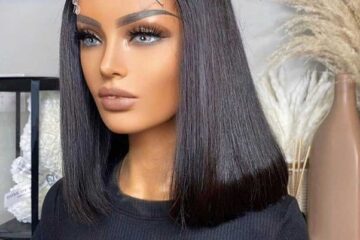A change in hair color may be quite a commitment, but it’s also a fun and easy way to give yourself a new appearance and shake things up a little.
If you’re thinking about giving it a go, here are some pros and cons to consider. Who is to say?
Perhaps you were going to be a brunette all along, but fate had other plans for you. There is only one way to find out for sure, and it is not by using a box of hair colors that you purchase from your neighborhood medicine shop.
Here are some helpful hints for experimenting with a new organic herbal hair color.
4 Tips for Trying a New Hair Color
1. Ignore the Box Photos
When searching for an ayurvedic natural black hair dye that can be used at home, a lot of ladies merely look at the picture on the box.
It’s possible that the model on the box has the ideal shade of brown hair, but we have no way of knowing what her natural hair color was before she used the dye.
Instead, go to the numbers and letters printed on the package to figure out the necessary level of color and tone. On a scale that goes from 1 to 10, 1 represents the darkest shade, while 10 represents the lightest shade.
The letters stand for the undertones of the dye; ash, gold, copper, and neutral are represented by the letters a, g, c, and n, respectively.
2. Use coloring as a guide
Ladies with fair complexion and light eyes seem their most natural when they wear lighter hues, whereas women with darker hair and skin look their best when they wear darker tones.
Warmer hair color will make you appear flushed, so if your complexion has a lot of pink in it, you should steer clear of it when choosing a hair color.
Gold tones are best for those with olive skin tones since they warm up the face and lessen the appearance of greenness.
If your skin tone is neutral, meaning it does not have any pink or green undertones, you have the option of wearing either warm or cool colors of blond hair.
3. Stay Within Two Shades
If you dye your hair at home, don’t go more than one or two shades darker or lighter than your natural color. This is of utmost significance for dark-haired women who have the intention of lightening their hair.
On the occasion that you want dark hair and want to lighten it. Because of the difficulty in whitening your hair with home coloring products, I strongly advise that you schedule a visit to a professional hair salon.
The reason for this is that home coloring kits do not contain the powerful chemicals that are required to bring about a significant shift in color.
There is a reason why hair colorists are required to attend school, pass a test, and acquire a license from the government.
This is because the chemicals needed to perform complex hair color changes can seriously injure both the hair and the scalp.
4. Don’t Skip Patch Test
It is essential to perform a strand test on a tiny section of your hair before applying new hair color to your complete head; failing to do so is essentially asking for a catastrophe.
If the color you use is excessively ashy, say, your complexion will seem dreary and aged. If your skin is sensitive to the dye chemicals, you run the additional danger of experiencing a reaction on your scalp.
Applying the dye to a tiny piece of your hair to perform a patch test will allow you to determine whether the color will be too light, too dark, or ashy.
Additional Tips for Trying a Color
- Dyeing your hair, a different color is a significant commitment to modifying your appearance as a whole, you should make sure to select a hair dye without ppd and ammonia that will live up to the standards you have set for it. When selecting a color for your outfit, you should consider a number of factors, such as your style and the color of your skin.
- Use of a clearing shampoo the day before dyeing the hair is recommended as a way to eliminate any product buildup, as well as to assist ensure that the hair is porous enough to accept the best hair color shampoo in an even manner. Use a deep conditioner on your hair afterward to restore any moisture that could have been lost during the dying process.
- The excellent thing is that you don’t have to completely redo your hair color every time you notice that it’s fading. If you do this, “color build-up,” “discolored endings,” “bands of lightness and darkness,” and “unnecessary harm” will result. You just want to color the new growth, and maybe, if it’s absolutely necessary.








